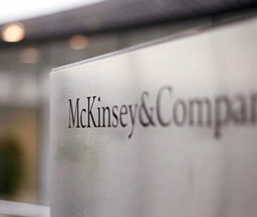
McKinsey: Hype Understates Value of IoT Data

Growing skepticism in reaction to the endless hype about the Internet of Things has spawned yet another IoT forecast that actually embraces the hoopla by concluding that the “hype may actually understate the full potential of the Internet of Things.”
Not usually given to hyperbole, the staid management consultant McKinsey & Co. attributes that assertion to several key findings centered on leveraging the massive amounts of data expected to be generated by the IoT: “Most of the IoT data collected today are not used at all, and data that are used are not fully exploited,” concludes a McKinsey study on the IoT released earlier this summer.
For example, the study by the McKinsey Global Institute found that “only 1 percent of data from an oil rig with 30,000 sensors is examined. The data that are used today are mostly for anomaly detection and control, not optimization and prediction, which provide the greatest value.”
Once early adopters get their arms around all that data through proposed “gateways” and other middleware designed to move network intelligence closer to data, McKinsey is projecting a potential economic impact of as much as $11.1 trillion annually by 2025. That forecast focuses on nine IoT application areas, all tied to harnessing data generated by expanding networks of sensors and devices.
The study also notes that the small percentage of data currently leveraged is being used for applications like real-time control on a factory floor or alarms about malfunctioning equipment. “More can be used for optimization and prediction,” the study concludes. The impact of leveraging IoT data for business processes includes applications like predictive maintenance, improved physical asset utilization and overall higher productivity. “The ability to monitor and manage objects in the physical world electronically makes it possible to bring data-driven decision-making to new realms of human activity,” the report notes.
McKinsey researchers define the IoT as a collection of “sensors and actuators connected by networks to computing systems. These systems can monitor or manage the health and actions of connected objects and machines.”
Increasingly, the developers of IoT infrastructure are stressing the need to develop what one calls a “system of systems” to help aggregate data in ways that will make it more useful. Andy Chang, an IoT manager at National Instruments, noted in an interview that the test equipment and instrumentation software specialist is working with big data vendors like Hewlett-Packard and chip makers like Intel to develop gateways and middleware that could be used to collect data.
“How do we make that data valuable?” Chang asks. The answer is critical he argues, because “data is the new currency of scientists and engineers.” Hence, National Instruments is working with big data partners to develop “platforms to acquire and analyze [huge] datasets.”
Indeed, the McKinsey study notes that manufacturers who are among National Instruments biggest customers “are creating new business models, by using IoT links and data to offer their products as a service.”
The study also stresses that that the IoT could eventually serve as “a key source of big data that can be analyzed to capture value, and open data, which can be used by more than one entity.”Amid the hype and rosy forecasts, the aggregation of huge datasets also creates major security and privacy risks. The IoT will spawn “new categories of risk” that extend beyond data breaches to potential physical harm when the technology is used to control assets like a water treatment plant, the study warns.
Big data efforts have already generated a consumer backlash, and the IoT could well exacerbate those concerns, the researcher acknowledged. “Providers of IoT-enabled products and services will have to create compelling value propositions for data to be collected and used, provide transparency into what data are used and how they are being used, and ensure that the data are appropriately protected.”
Recent items:
The Secret to Generating Value from IoT Data
It’s Sink or Swim in the IoT’s Ocean of Bigger Data






























